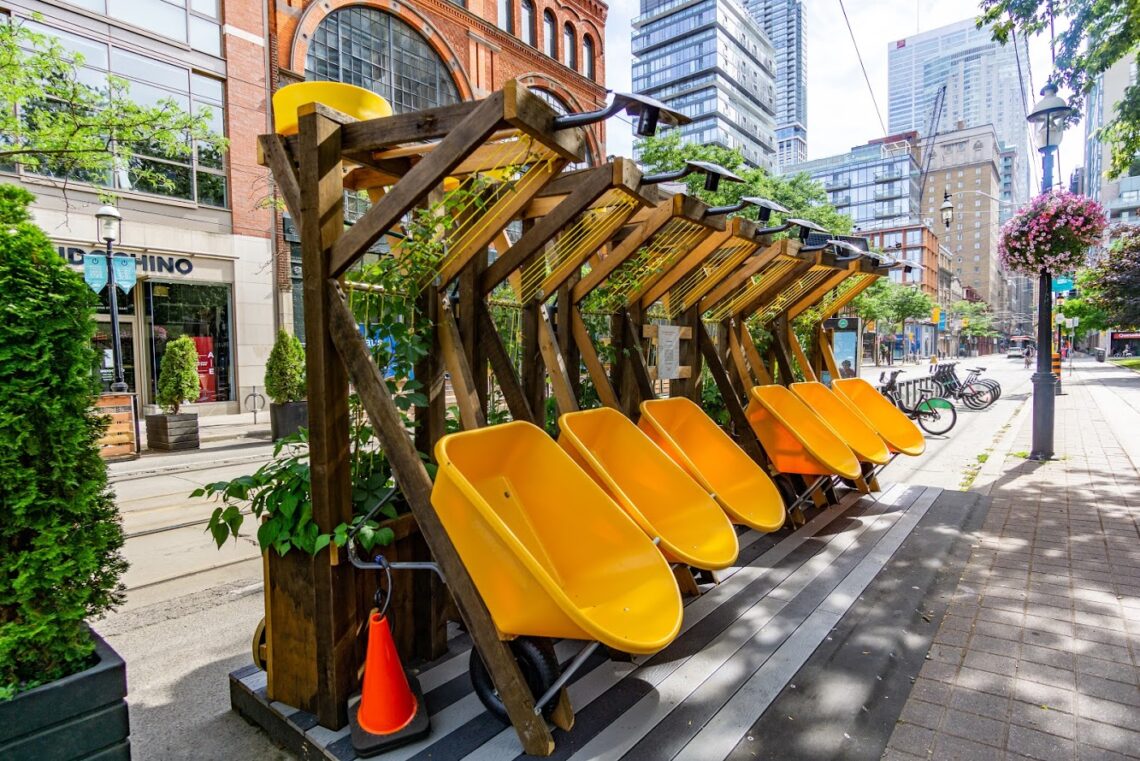
Expressing eco-conscious messages through art
As the saying goes, “art is subjective.” While this is true, there is something universal about environmental art and the message this artistic practice projects: to protect nature and the planet.
According to a blog post by sustainable energy company Iberdrola, environmental art and recycled art is not new. Artistic movements such as pop art utilized recycled materials from comic strips and advertisements. Additionally, Pablo Picasso and George Braque famously created collages out of old newspapers and magazines.
For many artists, the need to express environmental concerns is usually born out of a lifelong passion for nature.
Flipping the narrative
Toronto-based artist John Notten grew up with a penchant for exploring the outdoors. As a child, he would often go on camping trips with his family in the wilderness of southern Ontario’s Algonquin Park and Killarney Provincial Park. When he started a family of his own, he made sure that his children would have the same experiences as he did.
“I think that this connection with nature has really translated sort of seamlessly into my art,” he says. “And I don’t really do that in a conscious way. I don’t sit down and think, ‘So what am I interested in? Oh yeah, I love to camp, so I’m going to make some art about camping!’ It just seems like a very fluid thing for me.”
Throughout his career Notten has created several sculptures and art installations, many of which overtly translate messages about environmental issues. Among his most recent pieces of work is Plant it Forward, which was first installed on King Street East in Toronto in 2020.
Notten had been commissioned to create a piece based on the circular economy philosophy, which is a system that strives to eliminate waste and promote the continual use of resources. With this in mind, he created Plant it Forward out of materials that had already been used, such as wood harvested from Toronto’s Distillery District.
“You know that they came from the Distillery District because when I cut them, I could smell the whiskey. For 150 years, whiskey sloshed on those beams,” he says. “And I just love that as I worked with the material, it was a reminder that this did have quite a history before it ever got into my hands.”
After the exhibition portion of Plant it Forward was completed, Notten was able to donate the materials from the project to FoodShare Toronto, an organization dedicated to battling poverty and hunger. FoodShare then repurposed the wood to use in their produce gardens.
In 2021, Notten tackled other projects that encapsulated the message of being environmentally conscious. One of these projects was Over Floe, a set of sculptures exhibited at Ontario Place consisting of floating “icebergs” resembling buildings. Each “iceberg” was made from styrofoam salvaged from a demolition site.
Notten also created a sculpture called Flipping the Canoe, set to be installed in Toronto’s Todmorden Mills in 2022. According to him, both the piece itself and its installation location speaks to the anticolonialism statement he hopes to articulate.
“I think most people think of the canoe as being this iconic Canadian symbol of the wilderness and of recreation and leisure, cottaging and camping. It’s such a romantic object,” he says. “When this device was appropriated by colonial settlers, it did lead to incredible resource extraction that continues today at the expense of lots of things—the environment, the displacement of Indigenous people.”
From one artist to another
Notten suggests that all artists should be mindful of the materials they use, particularly if they wish to incorporate eco-friendly practices in their work.
“As an art maker, I have to know what my impact on the world is,” he says. “When you’re using oil paint, acrylic paint or gouache, or you’re building something with lumber, consider where that lumber is coming from and what is the source of the material. That may require you to do a little extra research.”
Patricia Tagulinao, 20, is a full-time education student at York University. She also dabbles in art during her downtime, having grown up painting and drawing. According to her, using recycled materials can be a good way to save money when on a tight budget, especially for students like herself.
“As an artist, I think it’s our duty to give new life to old things, whether it be actual ideas or real material things, and find the beauty in things that surround us,” she says. “Recycling is a good method to do that.”
Tagulinao believes in the impact that art can have on bigger communities and that artists can help to bring attention to greater causes.
“Seeing as our planet is dying so rapidly because of human beings, I think as artists we can help spread awareness with our work and make people feel and react, inspire them to make changes in their lives to better the environment,” she says.
Notten also notes the responsibility that artists carry no matter what medium they choose to pursue: to spread messages to a wider audience.
“I think that people who are creative have an incredible opportunity to share their ideas about the environment. Every discipline—whether it be writing, filmmaking, painting, drawing, sculpture—all kind of exist, because there is a public to receive them,” he says.
However, Notten says he believes that those who don’t consider themselves artists still aren’t “off the hook.”
“If you’re not a creator, maybe you’re just really good with social media and you can get messages out,” he says. “Or maybe you’re just a really great fundraiser, or maybe you can make a sign and you can walk and march. Everybody has the responsibility.”
About the author
Alyssa Bravo is a former reporter for Youth Mind. She is a coffee fiend and likes music, movies and food. She wishes to travel to Italy and Greece, and hopes she’ll live to see the day the Toronto Maple Leafs win their 14th championship. When she’s not writing, you can probably find her watching videos of dogs or baby pandas.







